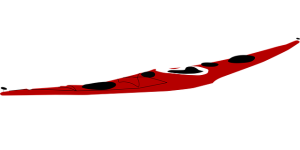Lightweight construction techniques, leveraging advanced composites and foam, revolutionize outdoor gear like the popular inflatable kayak designed for two people. This approach offers enhanced maneuverability, ease of use, and energy efficiency, aligning with modern adventurers' demands. Inflatable kayaks provide portability, quick deployment, and stability, suitable for both seasoned paddlers and beginners. Material selection, including high-quality PVC and lightweight connectors, ensures durability without compromising performance. These methods are also adopted in residential and commercial settings for open-plan designs and disaster relief modules, enhancing sustainability and efficiency. Inflatable kayaks for two have transformed outdoor adventures by offering convenient transport and quick setup. Future innovations include advanced materials like carbon fiber composites and smart sensors for adaptive, efficient structures, both on land and water.
Lightweight construction is transforming the way we build, offering innovative solutions that enhance functionality and sustainability. In this comprehensive guide, we explore modern approaches with a focus on the iconic inflatable kayak for two—a symbol of creative design and versatility. From material choices to environmental benefits, we delve into the engineering behind lightweight structures, their advantages in daily life, and real-world applications ranging from recreation to residential buildings. Get ready to discover how this trend is revolutionizing industries.
Understanding Lightweight Construction: A Modern Approach
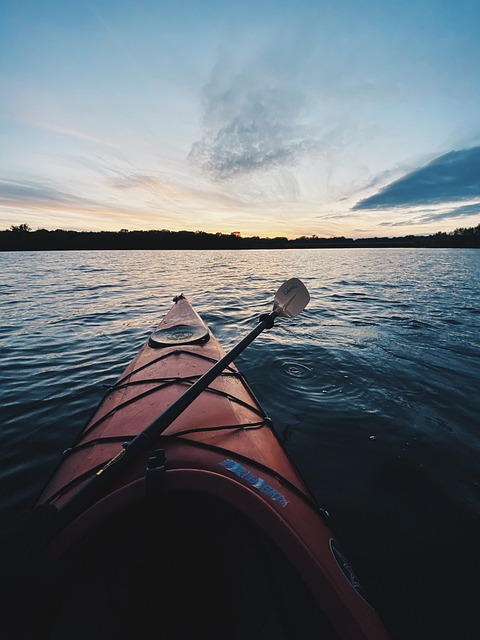
Lightweight construction is a modern approach that prioritizes using lighter materials and techniques to build structures, offering numerous advantages in today’s world. This innovative method is particularly appealing for creating versatile spaces, such as an inflatable kayak for two—a contemporary take on watercraft design. By employing lightweight materials like advanced composites and foam, builders can achieve remarkable strength while significantly reducing weight, making it easier to transport and install.
This approach allows for greater design freedom, enabling architects and engineers to create unique, space-saving, and environmentally friendly structures. In the context of an inflatable kayak for two, the focus on lightness translates into maneuverability and ease of use, catering to modern outdoor enthusiasts’ demands for portable, quick-to-deploy solutions. Lightweight construction techniques also enhance energy efficiency, reducing the overall environmental impact of buildings and products, including innovative watercraft designs like the inflatable kayak for two.
The Inflatable Kayak for Two: Symbol of Innovation in Design
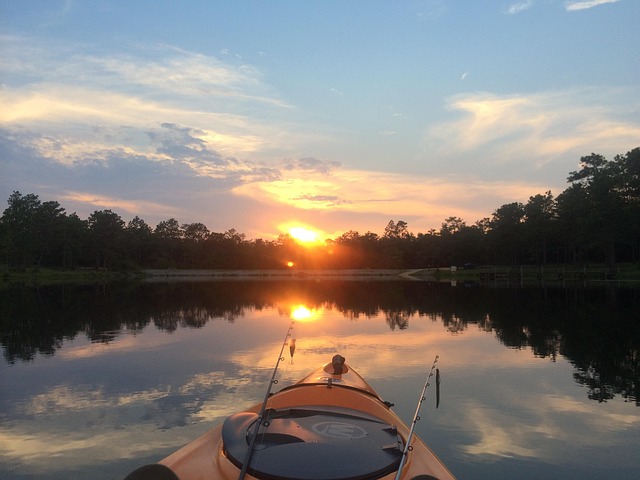
The Inflatable Kayak for Two represents a symbol of innovation in design within the lightweight construction realm. This game-changer combines the joy of kayaking with ease of transport and setup, making it perfect for folks who crave adventure but have limited space or time for traditional equipment. Crafted from durable yet lightweight materials, this inflatable kayak is designed to be portable and compact, fitting easily into a small car trunk or even a large backpack.
Unlike cumbersome, heavy kayaks, the inflatable kayak for two allows users to navigate rivers, lakes, and coastal waters with ease. Its innovative design incorporates robust air chambers that provide stability and safety, ensuring a smooth ride both for experienced paddlers and beginners. This versatile watercraft can be quickly inflated or deflated, enabling users to promptly dive into their outdoor escapades or pack it up for on-the-go adventures.
Material Considerations: Choosing the Right Components
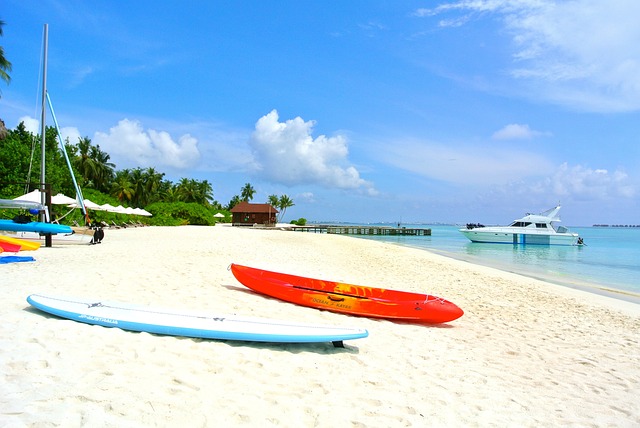
When considering lightweight construction, especially for a project like an inflatable kayak for two, material selection is paramount. The right components can significantly enhance performance and durability while keeping weight to a minimum. Inflatable kayaks, in particular, require materials that are robust yet lightweight—a delicate balance that allows for ease of transport without compromising strength or stability.
High-quality PVC (polyvinyl chloride) is a popular choice due to its superior flexibility, resistance to punctures, and ability to maintain its shape. For an inflatable kayak designed to accommodate two people, using lighter-gauge yet sturdy PVC tubing ensures the craft remains maneuverable while withstanding the weight of its occupants. Additionally, choosing lightweight yet durable connectors and valves made from materials like aluminum or advanced composites can further reduce overall weight without sacrificing structural integrity.
Benefits of Lightweight Structures in Everyday Life
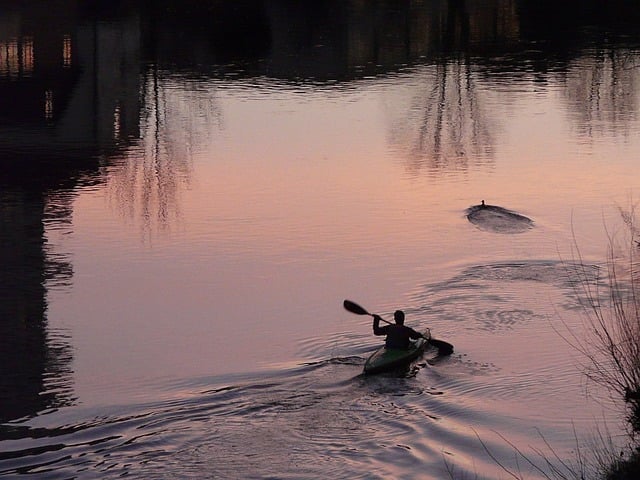
Lightweight construction brings numerous advantages to everyday life, offering both functional and practical solutions. One notable example is the rise of inflatable products like an inflatable kayak for two. These structures provide a unique blend of portability and durability, making them ideal for outdoor adventures and leisure activities. An inflatable kayak, for instance, allows users to easily transport it to their desired destination, be it a serene lake or a remote river, without the need for heavy equipment.
The benefits extend beyond recreation. Lightweight materials reduce overall construction costs and minimize the environmental impact of buildings. They also enhance structural flexibility, enabling innovative design possibilities. In residential settings, lightweight frameworks can create open-plan living spaces, while in commercial areas, they facilitate the rapid construction of temporary or modular structures for various purposes, including events or disaster relief efforts.
How Inflatables Enhance Portability and Storage Solutions

Inflatable kayaks for two have revolutionized outdoor adventures by offering unparalleled portability and storage solutions. Their lightweight design allows for easy transport, making them a game-changer for those who enjoy kayaking but have limited space or travel frequently. Unlike traditional kayaks that are bulky and require substantial storage area, inflatable models can be packed down into compact sizes, fitting conveniently in car trunks, rooftops racks, or even suitcases.
This portability extends to their setup process as well. In a matter of minutes, an inflatable kayak for two can be inflated and ready for use, providing hours of enjoyment on lakes, rivers, or coastal waters. Once the adventure is over, it deflates easily for convenient storage and transport again, ensuring that your kayaking experience doesn’t come with the usual encumbrances.
Engineering Challenges and Their Creative Solutions
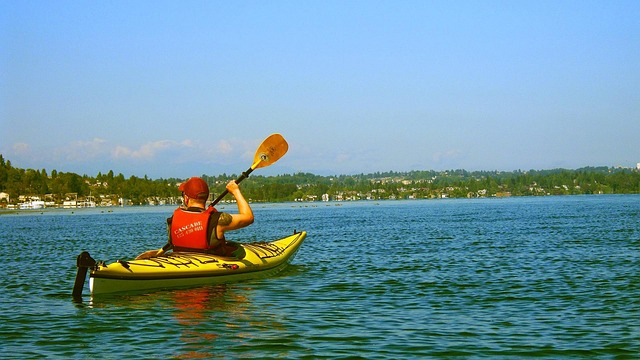
Lightweight construction presents unique engineering challenges, especially in designing products meant for outdoor adventure like an inflatable kayak for two. One significant hurdle is achieving structural integrity while minimizing weight. Engineers tackle this by employing innovative materials and designs; for instance, using advanced polymer blends that offer superior strength-to-weight ratios without adding bulk. Additionally, modular design concepts allow for easy customization and repair, ensuring the kayak remains functional even after minor damage.
Another challenge lies in maintaining buoyancy and stability while keeping overall weight down. Creative solutions include integrating internal air chambers with strategic placement of high-density foam cores. This combination ensures the kayak floats securely without excessive material usage. Furthermore, utilizing aerodynamic shapes reduces drag when paddling, allowing for more efficient navigation, a critical consideration for extended trips or competitive use, such as in an inflatable kayak for two.
Environmental Impact: Sustainable Building Practices

In today’s eco-conscious world, lightweight construction practices are not just about cost savings or aesthetics; they also significantly reduce an building’s environmental impact. By using innovative materials like advanced composite panels and inflatable structures, builders can minimize resource consumption and waste generation. For instance, these methods often require less energy for manufacturing, transportation, and erection compared to traditional building techniques.
One intriguing example is the use of inflatable kayak-like structures as temporary or modular components in construction. These versatile designs not only offer rapid assembly and disassembly, but also have a smaller carbon footprint due to their lightweight nature and potential recycling opportunities. Such sustainable building practices align with global efforts to create greener urban landscapes, mirroring the minimalism and adaptability inherent in inflatable recreational gear like a kayak for two.
Real-World Applications: From Homes to Recreation

Lightweight construction materials and techniques have found their way into a wide array of applications, from residential buildings to recreational gear. One notable example is the growing popularity of inflatable structures, such as an inflatable kayak for two. These innovative products offer a range of benefits, including ease of transport and setup, making them ideal for outdoor enthusiasts and those seeking flexible living solutions.
In recreational settings, lightweight construction has transformed activities like camping and water sports. Inflatable kayaks, designed for two people, are now easily portable, allowing couples to explore rivers and lakes with convenience. This trend extends beyond water recreation; lightweight materials enable the creation of compact, transportable homes, providing affordable and flexible living options for various scenarios, from short-term stays to emergency housing solutions.
Future Trends: Expanding the Horizons of Lightweight Construction
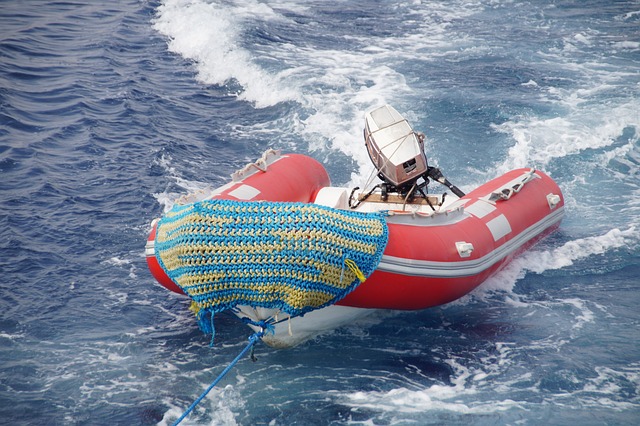
The future of lightweight construction is brimming with innovation, pushing the boundaries of what’s possible. One intriguing trend is the integration of advanced materials like carbon fiber composites and new-generation plastics, offering unparalleled strength-to-weight ratios. These materials are not just lighter but also more durable, making them ideal for diverse applications. For instance, imagine an inflatable kayak for two that combines these modern composites, providing exceptional maneuverability and stability without compromising portability.
Digital design and manufacturing processes will play a pivotal role in shaping this evolution. 3D printing, for example, allows for complex geometric structures, enabling the creation of lightweight components with minimal waste. This technology, coupled with smart sensors and connectivity, could lead to self-adjusting and adaptive structures, enhancing energy efficiency and performance. As we move forward, expect to see even more sustainable and intelligent solutions in construction, where lightweight materials and advanced technologies merge to create buildings and spaces that are not only aesthetically pleasing but also environmentally conscious.
